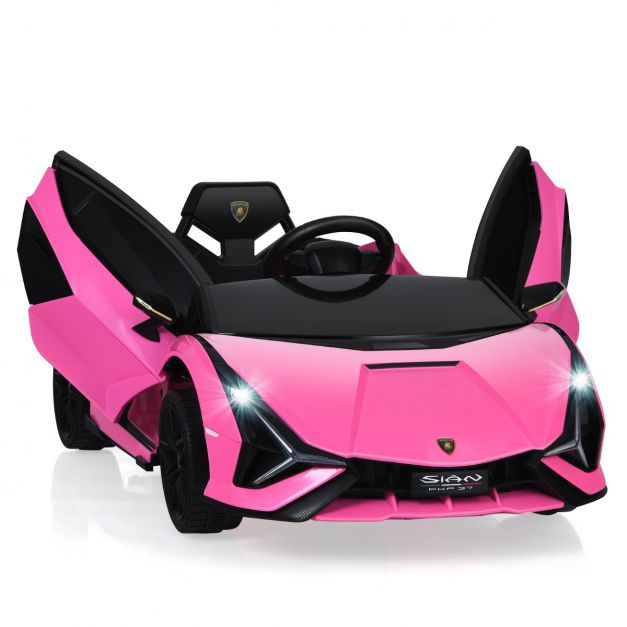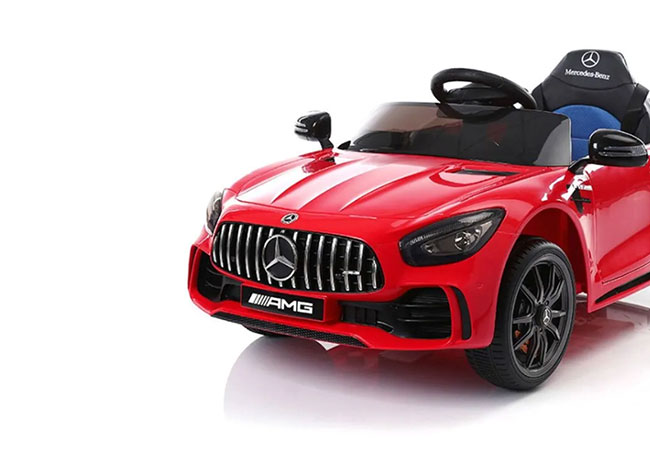New Facts On Picking Remote Control Childrens Cars
New Facts On Picking Remote Control Childrens Cars
Blog Article
What Are The Advantages Of Electric Vehicles Versus Remote-Controlled Child's Automobiles?
Electric and remote-controlled kids' cars offer different features and benefits and cater to various preferences and requirements. Here are the benefits of remote and electric children' cars -Advantages of Electric Kids' Cars -
Independence Electric cars for children allow them to drive independently. This gives them an experience of control and autonomy while they navigate around their environment.
Motor Skill Development - Operating in an electric vehicle involves motor skills, such as acceleration, steering and braking. This assists children to develop coordination as well as spatial awareness.
Realistic Experience. Electric kids' cars are often designed with realistic features, such as working headlights or engines and horns. This creates an engaging and immersive experience.
Outdoor Play - Electric children' cars are suitable for outdoor use on surfaces that are paved, such as sidewalks, driveways, or playgrounds. This allows kids to play and explore the outdoors.
The driving of an electric vehicle requires physical exercise. Children are in a position to exercise and move by using their feet and hands.
The advantages of remote-controlled kids' cars
Parental Supervision: Remote-controlled cars for children allow parents to monitor and help their child play. They also provide an extra layer of control and safety.
Parents can help guide and instruct children how to drive safely by using a remote. As children gain confidence, they are able to gradually transition to an independent driving style.
It's versatile. The car is able to be controlled by the child manually or remotely operated by the parents, giving flexibility and adaptability to different levels of skill.
Safety - Parents using remote control can prevent accidents and collisions, by taking the car off or steering it away. This enhances safety when playing.
Children and parents are able to play and interact with remote-controlled cars to explore the features of the vehicle.
The decision between remote-controlled and electric cars for kids is heavily influenced by factors such as the child's preferences and age, as well as their ability level and parental supervision. Electric cars provide realistic playing experiences as well as independence. Remote-controlled cars offer security, guidance, as well as engaging play for both children and parents. Take a look at the top rated JCB ride on digger for site recommendations including kidscars, car for toy, childs car toy, a toy car, childrens digger, childrens digger, toy car toy car, childrens ride on, ride a toy, toy the car and more. . 
What Type Of Maintenance And Assembly Requirements Exist For Kids' Rides On Automobiles?
Kids' ride-on cars usually require some assembly and regular maintenance to ensure maximum performance security, longevity, and safety. These are some of the most commonly used needs for assembly and maintenance of a children's rides-on vehicles.
The majority of cars that ride on arrive partially assembled and need some assembly. Attaching wheels, steering wheels, seats and other accessories per the instructions supplied by the manufacturer are generally required.
Follow the assembly instructions closely to ensure all components are correctly aligned and securely attached. Make use of the tools and hardware included to complete the procedure.
Cleaning
Regularly cleaning is vital to ensure that the car you ride on is looking its best and functioning properly. Use a soft, spongy cloth or sponge soaked in moderate soap and water to wipe down the exterior surfaces taking off dust, dirt and dust.
Attention should be given to areas prone of accumulation such the wheels, tires, and undercarriage. Make use of a toothbrush and a brush to scrub the areas that are difficult to reach.
Avoid making use of harsh chemicals, abrasive cleaners, or high-pressure water sprays because they can harm the paint or electronic components of the ride-on automobile.
Battery Care
To ensure performance and prolong the life of a ride-on battery, it is crucial to take good care of the battery. These tips will help you take care of your battery.
The battery must be fully charged prior to the first time use and again following each use to ensure maximum runtime.
Avoid charging batteries excessively or allowing them to be connected to chargers for long periods. This could damage batteries and shorten their life.
When not in operation, keep the car's battery and ride-on vehicles in a location that is dry, cool, and away from extreme temperatures and direct sunlight.
Periodically inspect the battery terminals to check for any damage or corrosion and clean them using a wire brush or terminal cleaner If necessary.
Replace the battery when it's not charging or if there are evidence of damage.
Tire Maintenance -
Examine the tires frequently for signs of wear, damage, or loss of pressure. Tires can be inflated to the recommended levels using a bicycle or air compressor.
Find debris and other foreign objects in the tread pattern that may cause punctures. Removing obstructions, and replacing damaged tires or repairing them when needed.
Lubricate axles and wheel bearings regularly to minimize friction and ensure a smooth rotation.
Sometimes, repairs or replacements are needed.
Despite the regular maintenance, certain rides may require repairs or replacement of parts due to wear and tear.
Be on the lookout for indications that your system is malfunctioning or is deteriorating, such as unusual noises or behavior, power loss, or other signs of trouble. Refer to the manufacturer's specifications or call customer support to get help on troubleshooting or repair solutions.
Replace worn-out or damaged parts promptly to stop further damage and ensure the safety and performance of the ride-on automobile.
These maintenance and assembly instructions will assist you in keeping your child's ride on car in good shape, allowing them to enjoy safe and fun playtime. Have a look at the top go here for Audi ride on car for blog advice including kiddies cars, ride on car, toy and car, car for toy, ride on digger, childrens electric ride on, toy ride, car electric ride on, toy cars toy car, electric two seater cars and more. . 
What Are The Various Types Of Remote Controlled Kids Cars? What Are The Advantages And Disadvantages?
Remote control cars for children are also referred to as RC cars, or remote-controlled vehicles are available in different sizes and styles as well as price ranges to fit various budgets and preferences. This article will provide an overview of the types, sizes and prices of children's remote controlled cars as well as their pros and cons.
Electric RC Cars – Remote-controlled cars powered by batteries that can be used indoors or outdoors. They are available in a variety of styles, such as buggies, trucks, and sports cars.
Nitro RC Cars - Gas-powered remote-controlled cars that have greater speeds and performance, however they require more care and experience to run. They are typically larger and more expensive than electric RC cars.
Scale Models Remote-controlled replicas of real-life vehicles such as trucks, cars, aircrafts, and boats. Scale models are available in a variety of scales, ranging from 10 to 1-24 With larger scales offering more detail and realism.
Sizes -
Remote-controlled children's cars are available in a variety of sizes, ranging from tiny miniature models to huge-scale replicas. The size and weight of the car can affect its performance.
Micro-sized vehicles are compact and light. This makes them perfect for indoor use with younger children. Cars with bigger sizes offer more power and durability and are thus ideal for off-road or outdoor racing.
Prices
Prices of remote-control children's vehicles depend on the factors that determine them, such as dimensions, features, and brands.
Micro-sized electric cars can be purchased for $20-$100, and larger electric and nitro-powered RCs can be purchased for $100-$500 or more.
Model cars in scale and top-of-the-line hobby RCs range from several hundred to over 1,000 dollars, based on how detailed and powerful they are.
The Pros and Cons of -
Pros -
Entertainment - Children's remote controlled cars can provide hours of entertainment and excitement for both children and adults.
Skills Development The operation of an RC vehicle can help children develop hand-eye coordination, spatial awareness, and problem-solving capabilities.
Social Interaction: RC cars can be great for social interaction with your family and friends.
Customization - A lot of RC vehicles can be upgraded with upgrades and accessories, which can improve their performance and appearance.
Cons
Cost - Remote control vehicles for kids, particularly those with high-end features and models for hobbyists are often very costly.
It can be difficult for children to operate the RC cars at first.
Maintenance – RC vehicles need regular maintenance. This includes cleaning, lubrication, as regular repairs and replacement of parts.
Safety Issues Safety Issues RC vehicles are prone to danger if they are not operated responsibly under adult supervision. They may cause accidents, fall hazards and electrical hazards.
In general, remote-control children's vehicles provide a thrilling and educational experience for kids of all ages. However, when choosing the best model for your child you should consider things like price dimensions, size, features, and security. These RCs are suitable for older kids and enthusiasts and simpler models can be a good fit for young children and those who are new to the world of. Check out the recommended kids ride on cars kidscars.co.uk news for more advice including lambo toy car, childrens electric ride on, kids electric cars, childs electric ride on car, lambo toy car, cars pedal car, toy cars toy car, remote control childrens car, toy toy cars, ride electric car and more. .